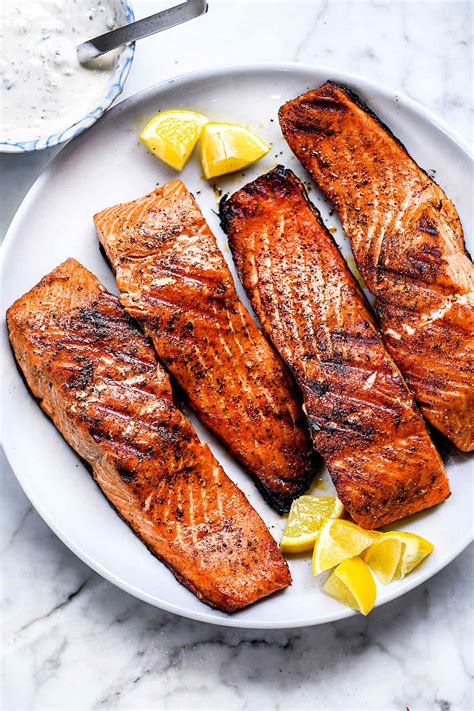How Long to Cook Salmon on the Grill: A Guide to Perfectly Cooked Fish
Grilling salmon is a fantastic way to enjoy this healthy and flavorful fish. However, overcooking can easily lead to dry, tough fillets. This guide will help you achieve perfectly cooked salmon every time, regardless of the thickness of your fillets. We'll cover cooking times, temperature considerations, and tips for grilling success.
Understanding Salmon Thickness and Cooking Time
The most crucial factor determining salmon grilling time is the thickness of your fillet. Thinner fillets cook much faster than thicker ones. Here's a general guideline:
- Thin Fillets (under 1 inch): 3-5 minutes per side.
- Medium Fillets (1-1.5 inches): 5-7 minutes per side.
- Thick Fillets (over 1.5 inches): 7-10 minutes per side, or even longer depending on your grill's heat.
Using a Meat Thermometer for Accuracy
While the above times are helpful, the most reliable way to ensure perfectly cooked salmon is to use a meat thermometer. Insert the thermometer into the thickest part of the fillet; it should register:
- 125°F (52°C): For medium-rare salmon (slightly translucent in the center).
- 135°F (57°C): For medium salmon (mostly opaque, slightly pink in the center).
- 145°F (63°C): For well-done salmon (fully opaque).
Preparing Your Salmon for Grilling
Before you even think about firing up the grill, proper preparation is key:
1. Pat it Dry: Crucial for Grilling
Pat your salmon fillets dry with paper towels. Excess moisture will prevent proper searing and can lead to sticking.
2. Seasoning: Enhance the Flavor
Season generously with salt, pepper, and any other desired herbs or spices. Popular choices include dill, lemon pepper, garlic powder, or paprika.
3. Oil the Grill Grates: Prevent Sticking
Oil your grill grates well to prevent sticking. Use a high-heat oil like canola or vegetable oil.
Grilling Techniques for Perfect Salmon
1. Preheat Your Grill: Essential for Even Cooking
Preheat your grill to medium-high heat (around 375-400°F or 190-200°C). This ensures even cooking and a nice sear.
2. Place the Salmon Skin-Side Down First: For Crispy Skin
Place the salmon fillets skin-side down on the preheated grill. This allows the skin to crisp up nicely.
3. Avoid Moving Too Much: Let it Sear
Resist the urge to move the salmon around too much, especially during the first few minutes. Let it sear properly to prevent sticking and ensure a beautiful crust.
4. Flip Carefully: Gentle Handling
Once the skin is nicely browned and crispy (usually after 3-5 minutes), carefully flip the fillets and cook the other side until they reach your desired level of doneness. Use a spatula to gently lift and flip.
5. Check for Doneness: Use a Thermometer
Use a meat thermometer to check the internal temperature. Once it reaches your desired temperature, remove the salmon from the grill.
6. Rest Before Serving: Retain Juiciness
Let the salmon rest for a few minutes before serving. This allows the juices to redistribute, resulting in a more tender and flavorful fillet.
Troubleshooting Common Grilling Problems
- Salmon Sticking: Ensure your grill grates are well-oiled and preheated. Avoid moving the salmon too much during the initial searing phase.
- Unevenly Cooked Salmon: Ensure your grill is preheated evenly. Adjust the grill's heat as needed to maintain consistent cooking temperature.
- Overcooked Salmon: Use a meat thermometer to monitor the internal temperature closely and avoid overcooking.
By following these tips, you’ll be grilling perfectly cooked, delicious salmon every time. Enjoy!
